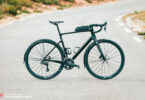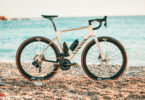Pinarello Dogma F12 – there can hardly be another model that makes the heart of die-hard road fans beat faster. But how does this super bike compare to the rest of our diverse test field? Can hobbyists actually make full use of the potential of this racer? We’ll answer all your questions here.
For an overview of the test fleet head to the group test: The best road bike of 2020 – 13 high-carat road bikes in review
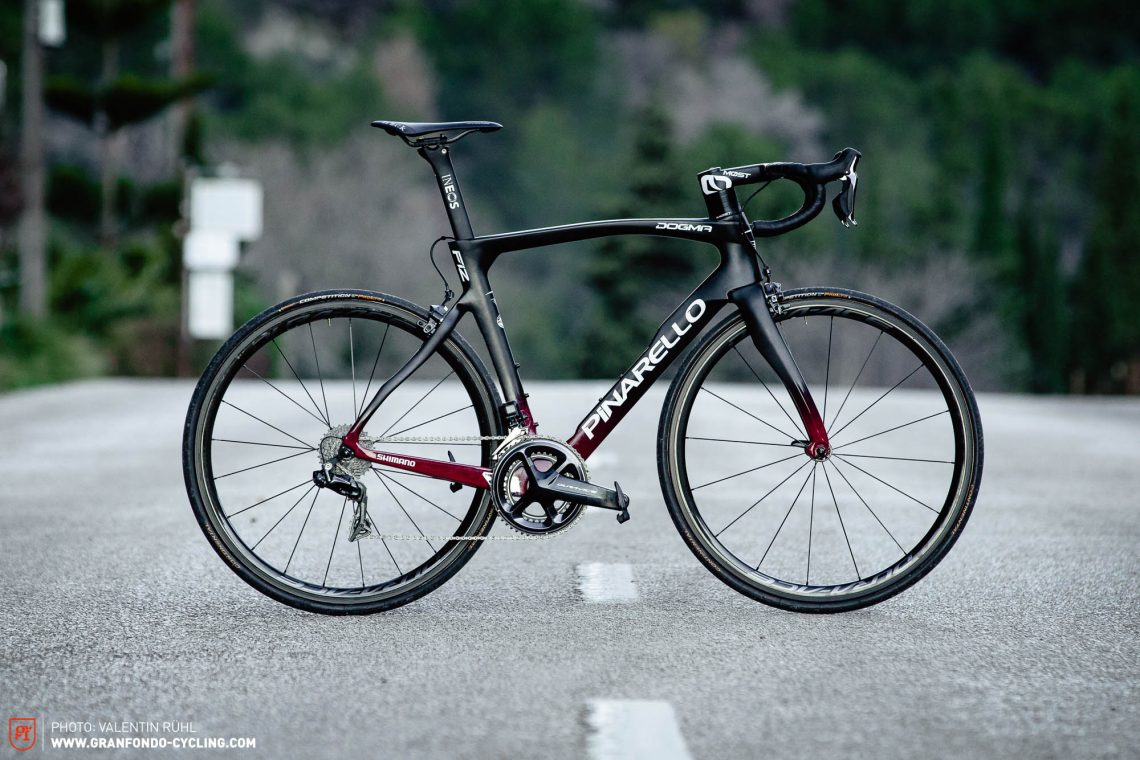
The exclusive Team Ineos Edition of the Pinarello Dogma F12 forms part of an intimidating lineage. After all, its predecessor, the Pinarello Dogma F10, was the most successful bike of the 2018 season and was ridden to four Grand Tour wins by Team Sky. Thanks to its triumph at the Tour de France 2019, the Dogma F12 is poised to become a fitting successor.
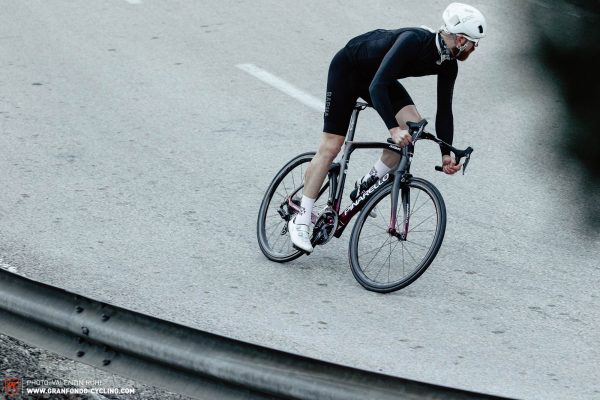
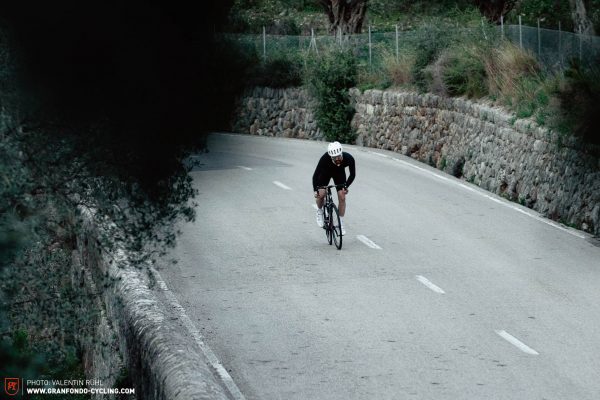
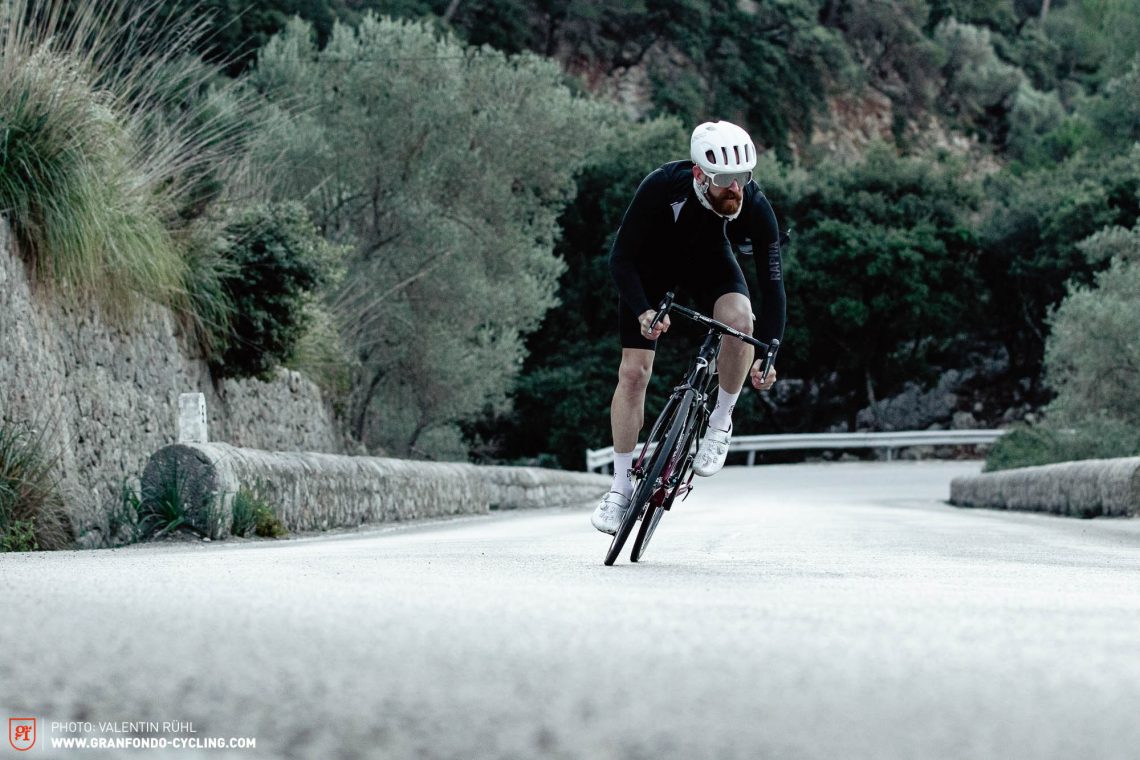
The Pinarello Dogma F12 Team INEOS Edition in detail
The carbon monocoque frame of the F12 is available in thirteen different sizes, both disc and rim brake versions and is compatible with mechanical and electronic groupsets. Compared to the F10, there has been a particular focus on improving aerodynamics. That means cables have been routed internally as far as possible, the carbon fork has been redesigned and the Most Talon Ultra cockpit, available in sixteen sizes, has been further refined. The changes made to the Dogma F12 are claimed to save 8 Watts at 40 km/h over the F10. While you’ll have to decide for yourself how significant this is for your purposes, one thing is clear: the aggressive and complex design language of the F12 draws a lot of attention. Our test bike is equipped with a 2×11 Shimano DURA-ACE Di2 R9100 groupset, Shimano DURA-ACE C40 tubular wheels and 700 x 25C Continental Competition Pro Ltd Tubular tires. It weighs in at a slight 7.11 kg in size 56 and can be bought for € 11,500. Definite F1 technology then! So why is this particular bike in the group test? It’s important for us to present you with the most up-to-date and important road bike options available and in that context, this iconic bike can’t be ignored

The large gaps between both the fork legs and seat stays are claimed to better channel air flow, improving aerodynamics.
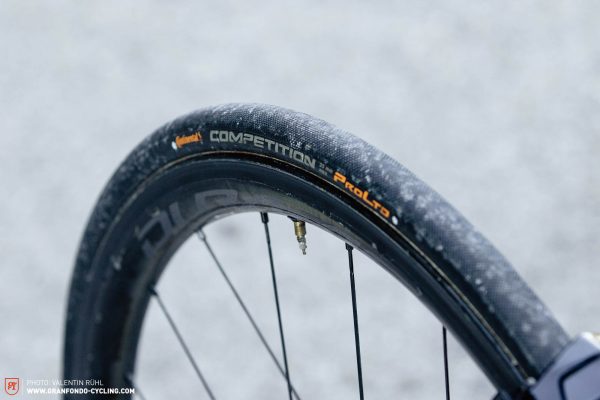
The Continental Competition Pro Ltd tubulars are performance focussed options. However, they have obvious disadvantages for normal riders. Will the pros switch over to tubeless in the future or will they be sticking with tubulars? Watch this space.

The Di2 wire has several centimetres exposed between the seat tube and tire. We didn’t have any issues during our test, but we can nonetheless envisage a cleaner solution.
Pinarello Dogma F12
€ 11,500
Specifications
Seatpost Pinarello Dogma F12 Carbon 0 mm
Brakes Shimano DURA-ACE R9110 Direct Mount
Drivetrain Shimano DURA-ACE Di2 R9100
Stem Most Talon Ultra 1k Aero Road Integrated Cockpit 130 mm
Handlebar Most Talon Ultra 1k Aero Road Integrated Cockpit 400 mm
Wheelset Shimano DURA-ACE C40 Tubular
Tires Continental Competition Pro Ltd Tubular 700 x 25C
Gearing 52/36 T und 11–30 T 2x11
Technical Data
Size 42 44 46,5 47 50 51,5 53 54 55 56 57,5 59,5 62
Weight 7.11 kg
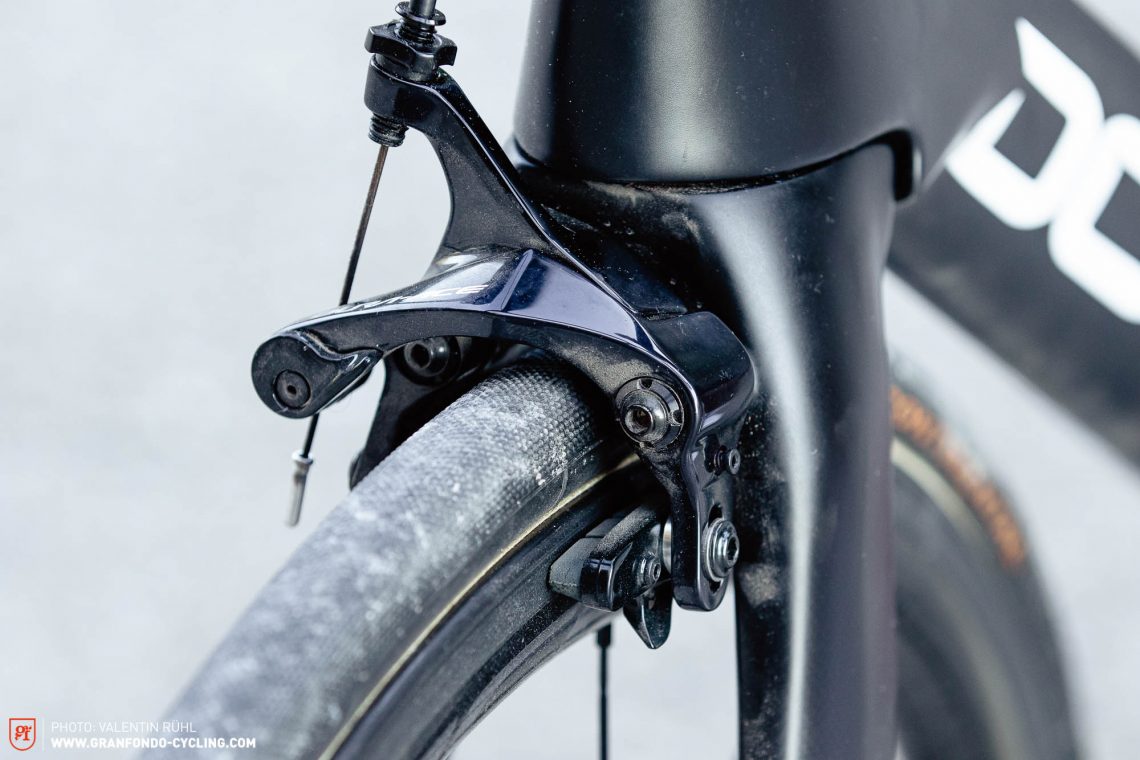
If it’s just about stopping power, the direct-mount DURA-ACE brakes offer almost the same performance as disc brakes. However, in terms of modulation and performance in the wet, they quickly fall behind.
The geometry of the Pinarello
| Size | 42 | 44 | 46,5 | 47 | 50 | 51,5 | 53 | 54 | 55 | 56 | 57,5 | 59,5 | 62 |
|---|---|---|---|---|---|---|---|---|---|---|---|---|---|
| Seat tube | 415 mm | 435 mm | 455 mm | 455 mm | 480 mm | 495 mm | 510 mm | 520 mm | 530 mm | 540 mm | 555 mm | 575 mm | 615 mm |
| Top tube | 498 mm | 503 mm | 515 mm | 525 mm | 525 mm | 535 mm | 545 mm | 550 mm | 557 mm | 565 mm | 575 mm | 587 mm | 620 mm |
| Head tube | 94 mm | 99 mm | 104 mm | 114 mm | 109 mm | 114 mm | 123 mm | 131 mm | 142 mm | 150 mm | 163 mm | 199 mm | 239 mm |
| Head angle | 69.2° | 70.0° | 70.5° | 71.4° | 71.4° | 72.0° | 72.5° | 72.8° | 72.8° | 73.2° | 73.7° | 73.4° | 73.4° |
| Seat angle | 74.4° | 74.4° | 74.4° | 74.0° | 74.0° | 73.7° | 73.7° | 73.4° | 73.4° | 73.0° | 73.0° | 72.4° | 72.0° |
| Chainstays | 406 mm | 406 mm | 406 mm | 406 mm | 406 mm | 406 mm | 406 mm | 406 mm | 408 mm | 408 mm | 408 mm | 408 mm | 411 mm |
| BB Drop | 67 mm | 67 mm | 72 mm | 72 mm | 72 mm | 72 mm | 72 mm | 72 mm | 72 mm | 72 mm | 72 mm | 67 mm | 67 mm |
| Reach | 349 mm | 354 mm | 365 mm | 371 mm | 372 mm | 378 mm | 383 mm | 385 mm | 389 mm | 391 mm | 397 mm | 393 mm | 410 mm |
| Stack | 498 mm | 506 mm | 518 mm | 530 mm | 525 mm | 532 mm | 542 mm | 551 mm | 562 mm | 570 mm | 585 mm | 613 mm | 652 mm |
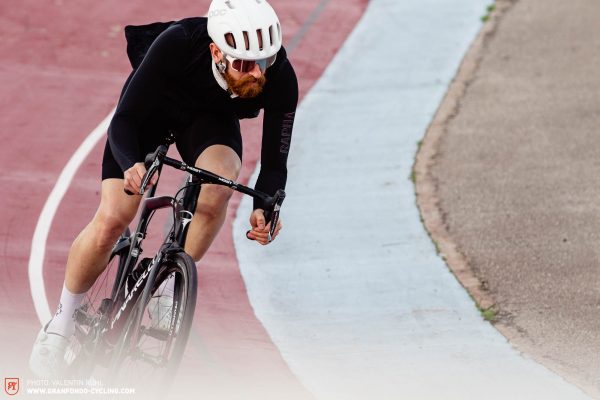

It’s almost a struggle to ride this bike slowly!
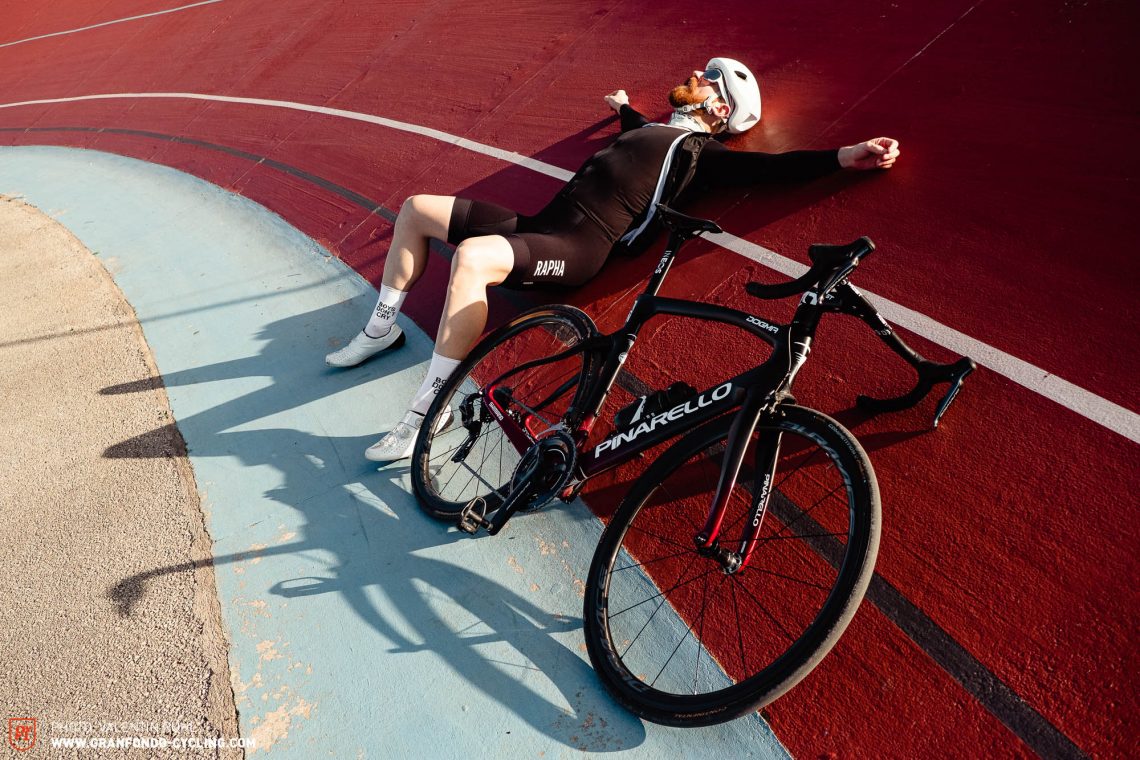
The Pinarello Dogma F12 Team INEOS Edition Test in review
The acceleration of the Dogma F12 is looking for its equal in our test. Regardless of the situation you’re in, the bike willingly and quickly generates speed and reveals itself as the speed demon of our test. No other bike demanded or encouraged our testers as much to push to their (lactate-) threshold and beyond. In dry conditions, the direct-mount rim brakes are easy to control but can’t be modulated as effectively as disc brakes nor keep up with their braking performance in the wet. In terms of handling, the Pinarello is agile, but rather than being playful, feels aggressively direct. Without either over- or understeering, it shines with its balanced handling. The high degree of precision and direct ride makes it possible to hit the perfect line even at high speeds. The moderate drop of flat top of the cockpit offers good ergonomics. But how is its overall comfort? There’s no question that the F12 is stiff and direct. However, we see this as healthy ‘racing stiffness’ rather than a bone-shattering hardness. The frameset offers a degree of vibration damping but the comfort is mostly a result of the Shimano wheelset. The riding position is aggressive but not overly long. Our testers didn’t feel too stretched though the platform is undoubtedly a purebred road bike. So really, the question is about whether this can be a road bike for everyone. Our simple answer is no. This machine is a dedicated competition bike that is focussed solely on getting you from A to B as quickly as possible. As a result, relaxed cruising or social rides aren’t a comfortable affair.
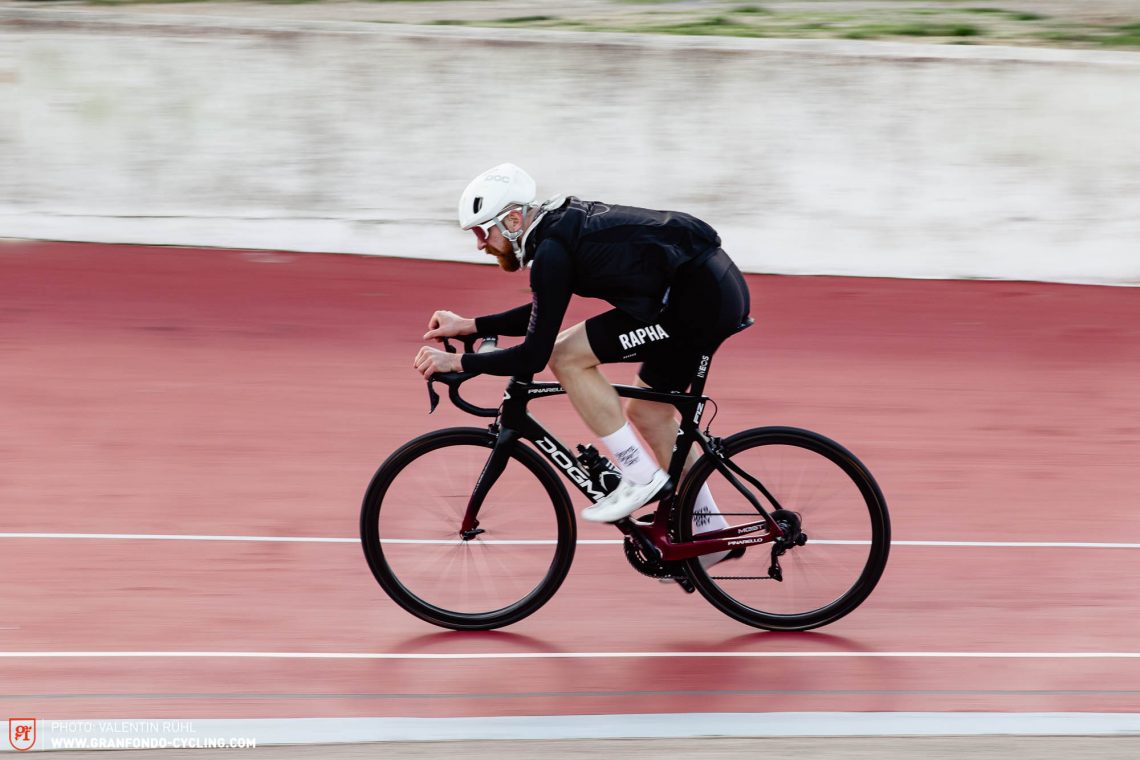
Tuning tips: The bike offers a coherent package as is. Take it or leave it.

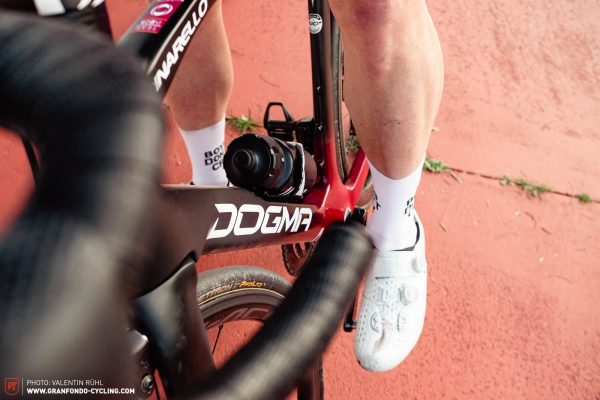
Riding Characteristics
4Agility
- cumbersome
- playful
Stability
- nervous
- confident
Handling
- demanding
- balanced
Fun factor
- boring
- lively
Comfort
- firm
- comfortable
Value for money
- terrible
- very good
Conclusion
The Pinarello Dogma F12 is all about the Tour de France feeling. Ambitious riders who know what they’re letting themselves in for will be rewarded with a first-class, prestigious race machine without any compromises. If our test was all about speed, this bike would win. However, due to its limited comfort and as a result, its more limited all-round qualities, it doesn’t offer enough versatility to secure the win.
Tops
- uncompromising speed in every situation
- precise steering
- balanced handling
Flops
- limited comfort/uncompromising stiffness
- brake power in the wet and modulation compared to disc brakes
For more info head to pinarello.com
The test field
For an overview of the test fleet head to the group test: The best road bike of 2020 – 13 high-carat road bikes in review
All bikes in test: Argon 18 Krypton Pro (Click for review) | Bianchi Infinito CV Disc (Click for review) | BMC Roadmachine 01 ONE (Click for review) | Cannondale SuperSix EVO Hi-MOD Disc Dura Ace (Click for review) | Cicli Bonanno Futomaki Disc (Click for review) | FOCUS IZALCO MAX DISC 9.9 (Click for review) | LOOK 795 BLADE RS DISC (Click for review) | OPEN U.P.P.E.R. (Click for review) | Pinarello Dogma F12 Team INEOS Edition | ROSE REVEAL SIX Dura Ace Di2 Custom (Click for review) | Specialized S-Works Roubaix (Click for review) | Trek Domane SLR 9 eTap (Click for review) | VOTEC VRC PRO (Click for review)
No, it’s not about perfect race tracks, it’s about efficiency. Fast, fleet-footed and efficient – those who want to speed along high-speed passages need a defined and spritely bike that accelerates with ease and efficiency. Nevertheless, reliable components are important too. We interpret “Smooth tarmac” bikes as follows: Hard efforts at high speeds with a maximum efficient bike on a consistently well-paved road. Effort-joy ratio: 80:30 (not everything has to be 100%!)↩
… also known as bike riding. Broken-up roads in the hinterland, deadlocked gravel roads, loose surfaces – sometimes muddy, sometimes bone-dry. For this, it takes bikes with super all-round, handling and wearing qualities uphill and downhill. Effort-joy ratio: 50:50↩
If you want to use your bike almost every day, you usually do not need an extremely tuned racing machine. Solid components, which are able to cope with the rigours of continuous usage in any kind of weather, are part of the basic equipment. At the same time, the bike should have practicable details: integrated fenders/assembly options, luggage racks/attachment points and a light system or at least the option of installing bike lights. The position on the bike should be rather relaxed, the overall comfort high, so that the Afterwork Ride becomes a cure and not a curse. Effort-joy ratio: 30:70↩
You can find more info about our rating system in this article: Click here! ↩
Did you enjoy this article? If so, we would be stoked if you decide to support us with a monthly contribution. By becoming a supporter of GRAN FONDO, you will help secure a sustainable future for high-quality cycling journalism. Click here to learn more.
Words: Photos: Valentin Rühl


